Expert Advice
Chironomids – The Most Significant Stillwater Insect Hatch to Master
When it comes to talking about the most prolific and prolonged aquatic insect emergence found in freshwater it is the midge or chironomid that wins hands down. With an estimated 2500 species of chironomids found living in lakes and rivers throughout North America, they reign supreme in productive stillwaters.
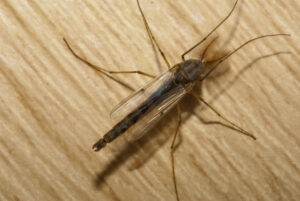
Let’ s Look at the Life Cycle
Chironomids are members of the Dipteran (two-winged) order of insects. To the uninitiated, the adult chironomid looks like a mosquito but thankfully the adult female chironomid has no feeding mouthparts. Chironomids undergo a complete life cycle comprised of larval, pupal, and adult stages. Trout and other fish species feed on all their life stages but in lakes, the most intense feeding occurs during the pupal stage.
Species of chironomids range in size from a couple millimeters to over 20 millimeters in length. Common larval colours are shades of red or green. Pupae come in a wide range of colours which is a critical factor in mastering this insect emergence. Trout are able to discern colours and so can become extremely picky over size and colour of the pupae they are willing to ingest. Common pupal base colours include black, green, maroon, brown, grey and a multitude of various shades of these colours. Consistently successful chironomid pupae anglers are dialed into size and colour of the pupae of the day and are presenting these patterns in the depth zone where the trout are feeding on them.
Emergences
Chironomids are the perfect trout food source for several reasons. Daily emergences are prolific, several species of chironomids are often emerging simultaneously, and hatches are prolonged. On coastal lakes or lakes that do not freeze over the hatches can occur throughout the year but are most concentrated in the early to late spring periods. Emergences on interior lakes start within days of ice off and build through the spring and into the early summer months. Small emergences are also occurring on many lakes in the early to mid-fall period.
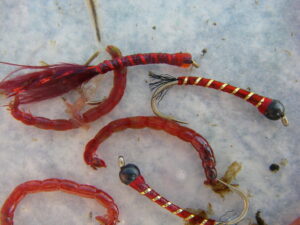
An added bonus is the fact that the actual emergence process involves pupae slowly rising vertically up through the water column to transform into the adult phase. There is no chasing or hunting down required by the trout, they just leisurely swim through bands of chironomid pupa and inhale hundreds of them in a very short order.
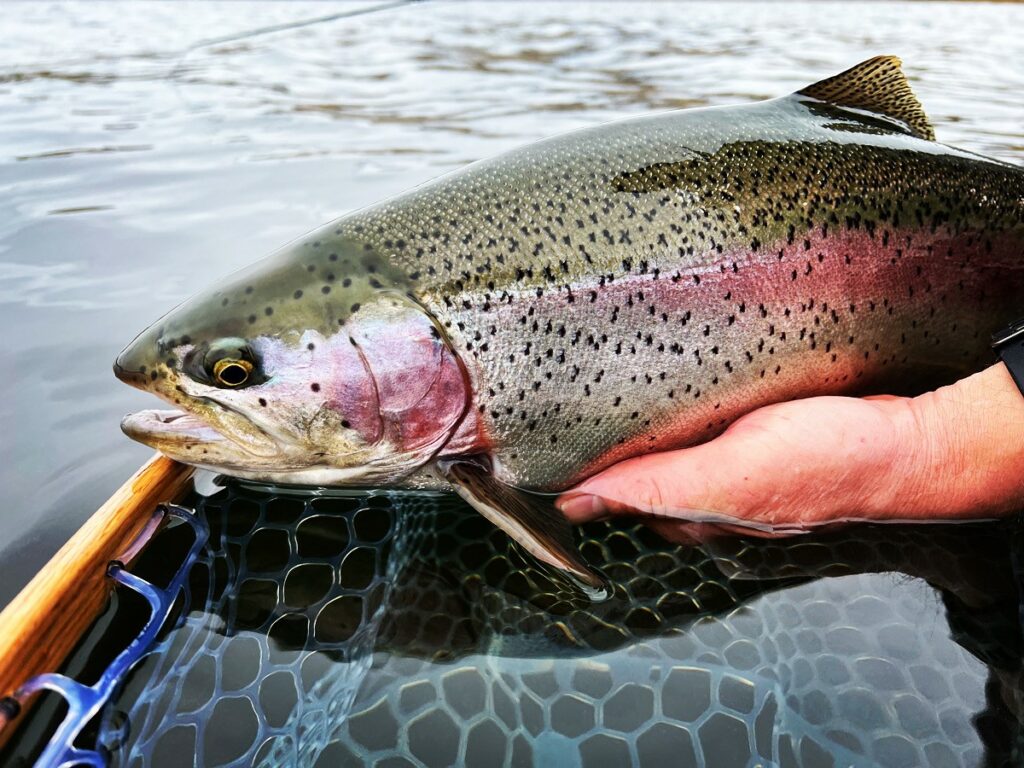
Down to the depths – Gassed up Chironomids
Chironomid larvae which are often referred to as blood worms live in larval tubes in the mud-water interface at the bottom of the lake. They can be found in a meter of water or in 30 meters of water but always living in the benthic zone. When mature the larvae transforms into the pupal stage. The fully developed pupa then breaks free of the larval tube and begins a slow ascent to the surface of the lake whether in 3 meters or25 meters of water. A buildup of gas under the pupal cuticle gives them a very silvery, mirror-like appearance as they ascend through the water column. Trout feast on the pupae as they stage just of the lake bottom or as they slowly make their way to the surface of the lake. Pupal emergences are heavy, literally hundreds of thousands of pupae could be moving through the water column of just a small area of a lake.
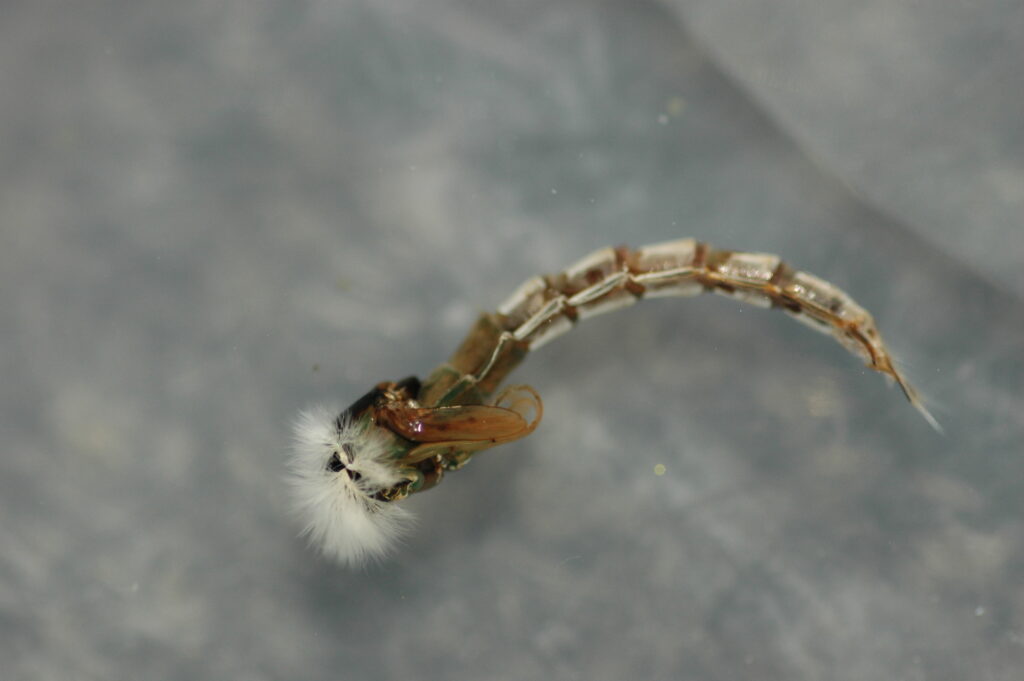
Trout do prefer to feed on the pupa close to the lake bottom, where they are most concentrated. These newly emerged pupae will often spend several days suspended 30 to 50 cm off the lake bottom prior to beginning their vertical ascent to the surface. During this staging period, the pupal fishing can be extremely good despite no evidence of any cast pupal shucks or adults sitting on the surface of the lake.
The easiest and often most effective way to fish the pupa is to suspend patterns within about 30 cm of the lake bottom using a floating fly line and strike indicator. This works best in water less than 7 meters deep. Emergences occurring in deeper water can be effectively fished with intermediate, type 2, 3 or 5 full sinking lines. When using these various densities of sinking lines the goal is to cast out the flyline and allow the pupal pattern to sink to the lake bottom and then initiating a slow but steady retrieve of the fly which allows it to ascend on a gradual angle up through the water column and thus through any potential feeding depth that the trout are concentrated at.
Presenting chironomid pupal patterns in water deeper than 8 meters is ideal for a technique called dangling or deep lining. This is a vertical presentation of a chironomid pupal pattern using a very fast sinking line such as a type 7 (sinking at a rate of 7 inches/second). The angler casts out only enough fly line to reach the bottom of the depth of water being fished. The pupal pattern is again suspended within 30 cm of the bottom or can be very slowly brought up through the water just like the real ones. The dangling technique results in very hard strikes which means your rod should be in your hands or in a rod holder. Laying a rod across a boat seat or across the gunnels of your boat is a sure recipe for a lost rod!
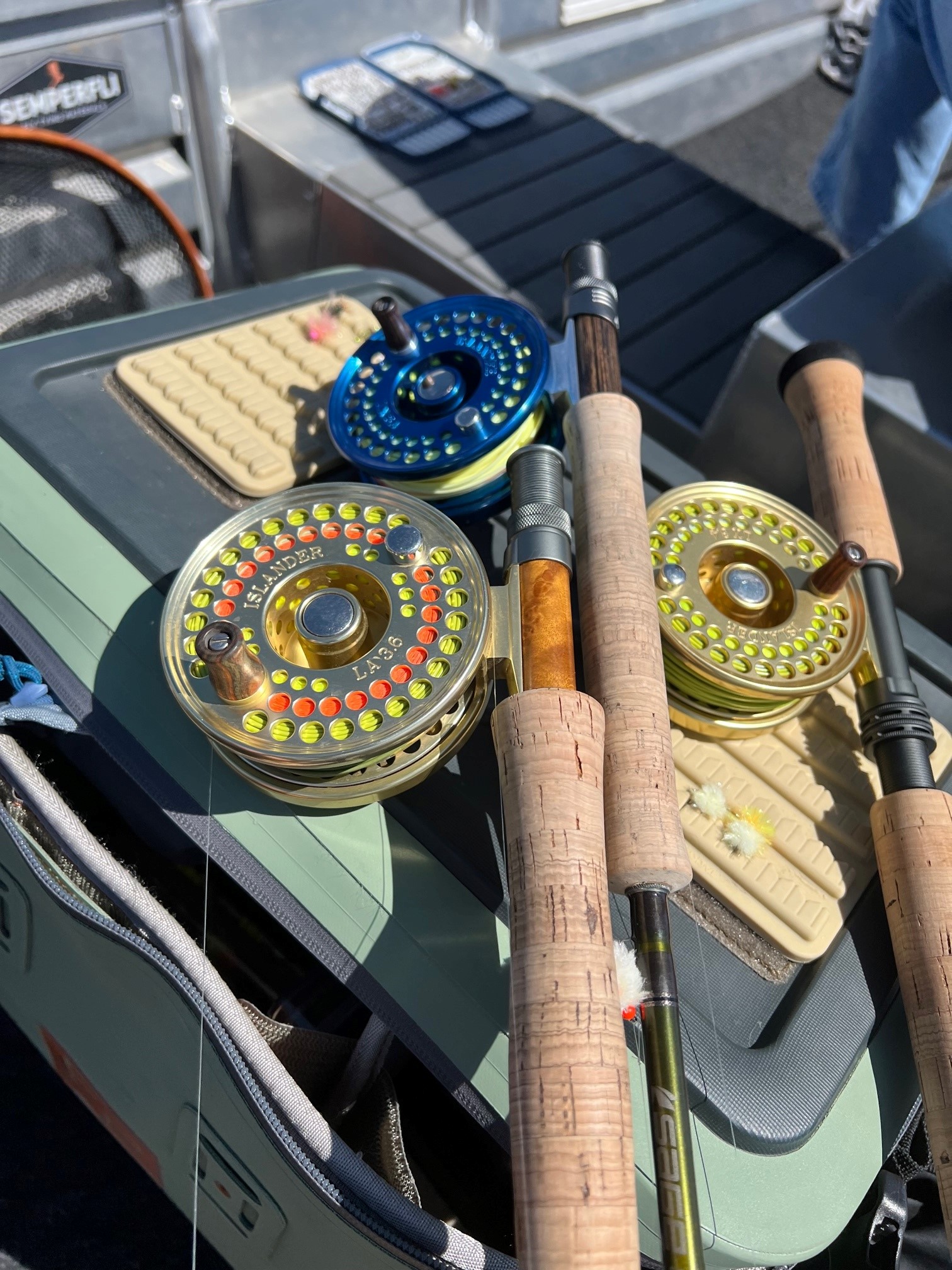
A depth sounder is a crucial piece of equipment for fishing lakes and particularly when fly fishing. Sounders not only tell you the depth but also at what depths the fish are feeding and in the case of chironomid pupa and larva that is most often very close to the lake bottom.
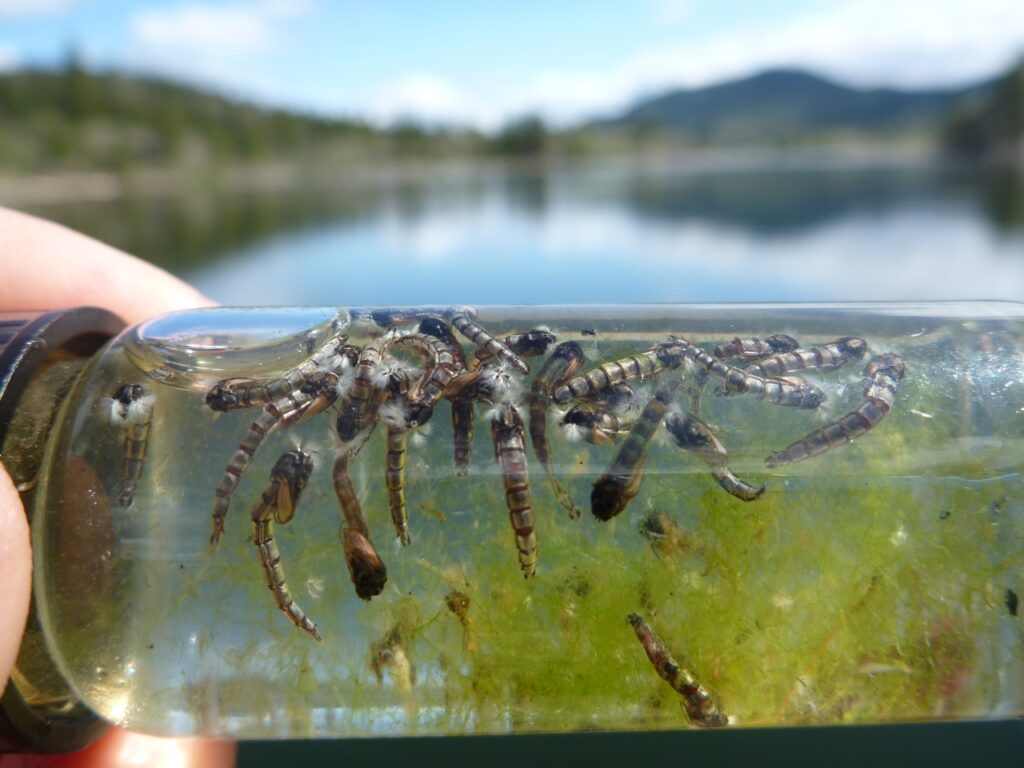
Deciding what pupal size and colour to tie on is made easier by capturing live pupae as they reach the surface film using a small aquarium net. A throat pump which allows the sampling of live food items from the throat of the fish is also an extremely valuable tool in determining what fish are feeding on as well as size and colour of those food sources.
Your enjoyment of fly fishing trout lakes will increase 100 fold by learning how to fish chironomid emergences. Believe me, it is addictive but who doesn’t like catching lots of fish. Spring and the first hatches are just getting going so it’s time to get your gear and flies in order and get out on the water.
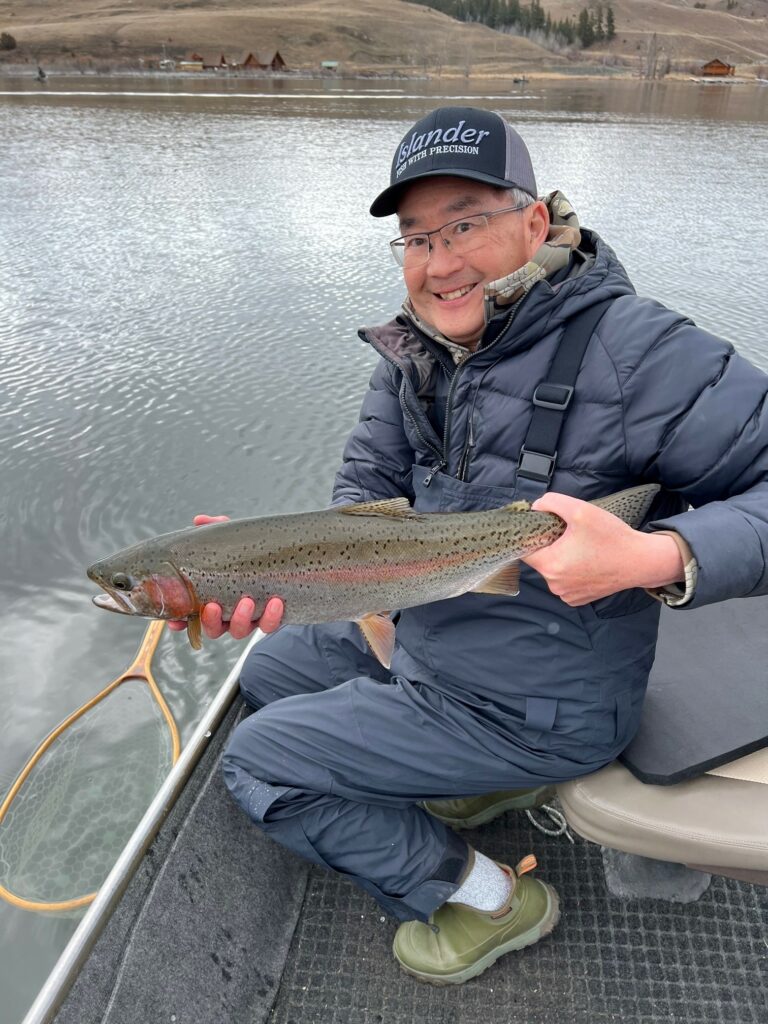
As a guide, seminar host, successful author, and retired fisheries biologist, you’ll be hard pressed to find a more passionate and influential angler in all of British Columbia than Brian Chan. Based out of Kamloops, BC, he enjoys spending time on local lakes when he isn’t reaching for the ends of the earth for his next adventure.


Thank you it was very informative